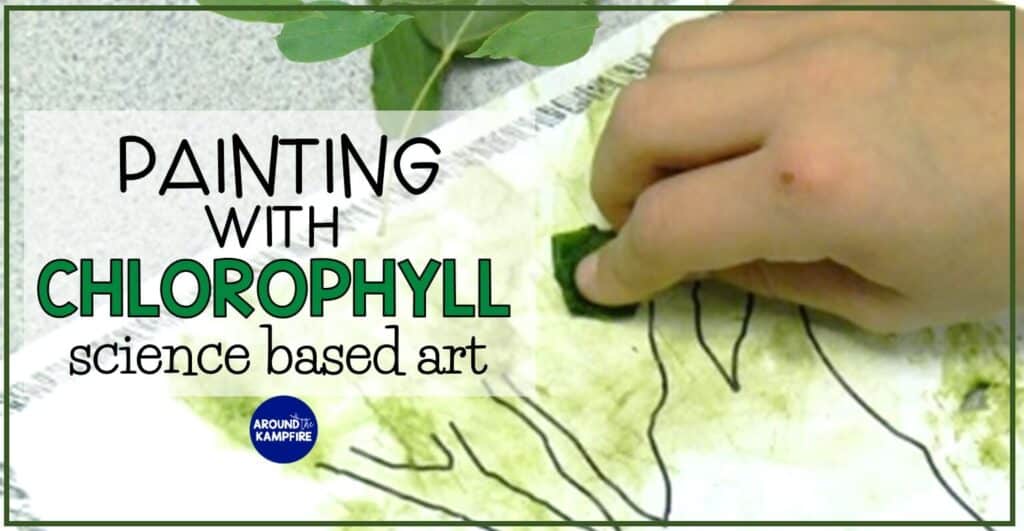
Chlorophyll paintings are a fun and creative way to integrate art and science as students learn about plants, the process of photosynthesis and how a plant makes its own food. In this post I’ll share how to incorporate art into your plant science activities by having your students make leaf rubbings and paint pictures with chlorophyll.
How to Make Chlorophyll Paintings
Chlorophyll, the green pigment found in a plant’s leaves, is a key ingredient in the process of photosynthesis. It also makes great paint!
For this project you will need:
- 8-10 leaves per student
- a white sheet of paper
- a metal spoon
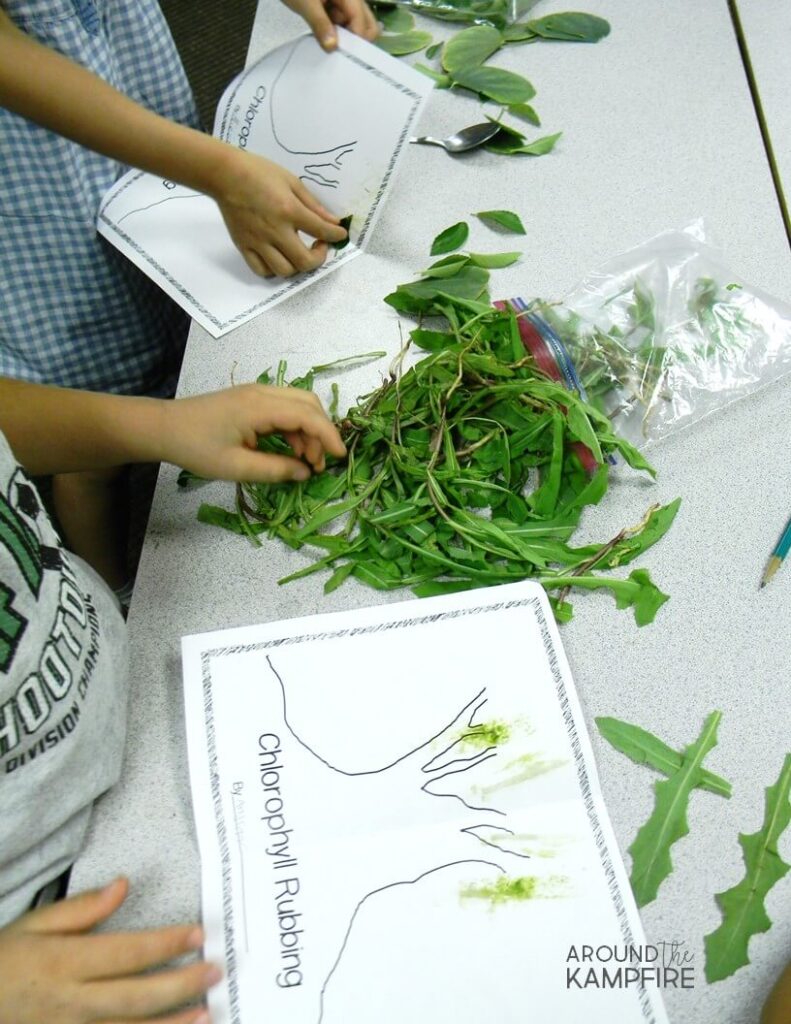
I ask students to bring in a bag of leaves from home. I also bring in a big bag of extras and several bunches of fresh spinach. Spinach leaves provide lots of green chlorophyll while some other types of leaves don’t provide as much. We discovered it’s best not to use leaves with a waxy feel since they are harder to press and don’t release their chlorophyll easily.
To make the paintings:
- Fold a sheet of white paper in half. (We used tree templates from this plant life cycle unit.)
- Place several leaves between the folded paper.
- Press firmly on the leaves between the pages and rub with a metal spoon. Avoid plastic spoons as they break when pressed as firmly as necessary.
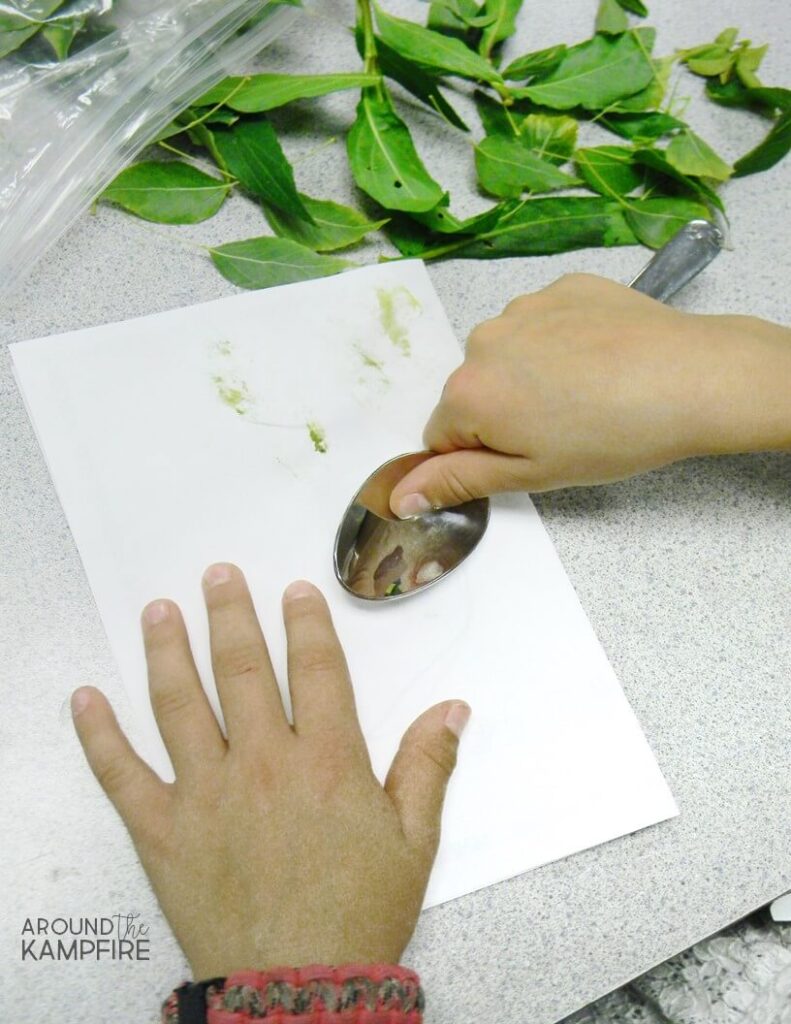
Some of my students began with leaf rubbings, but most quickly discovered they could actually “paint” their pictures by balling up the leaves and using them as paintbrushes. This took less time, released more chlorophyll, and they were better able to control where the pigment was on the page.
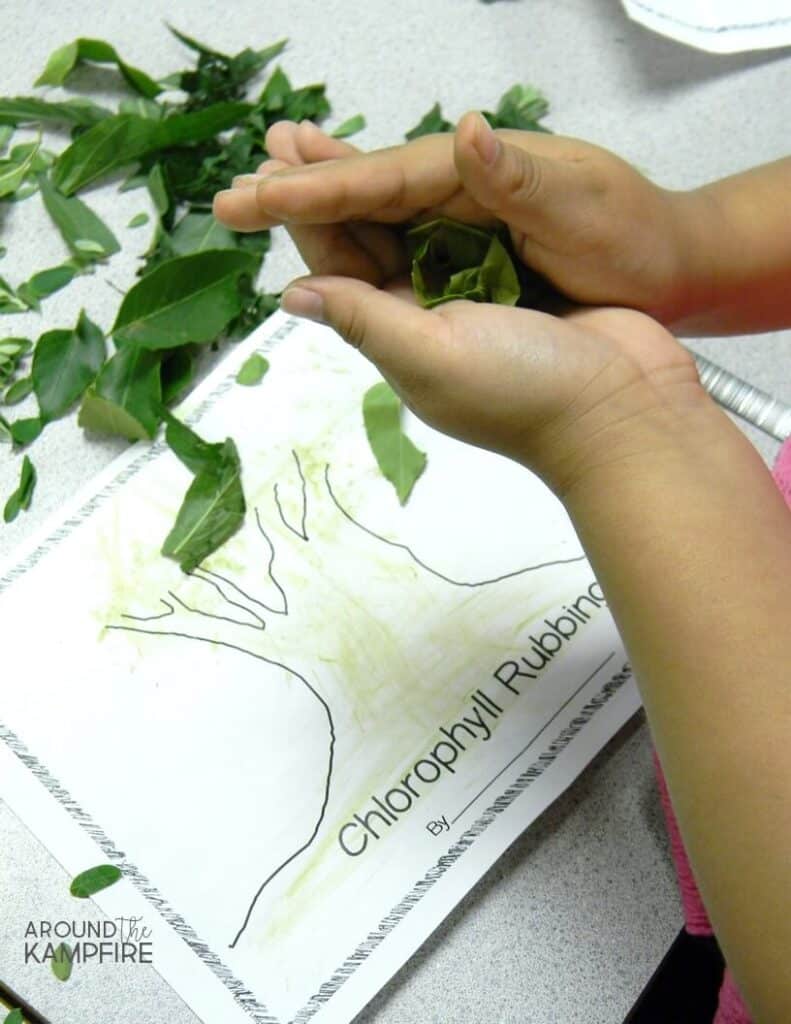
I gave each student a tree outline template and they painted in the leaves with their chlorophyll. As students work, encourage them to compare the different leaves they are using and discuss which release the most chlorophyll and which release very little. (We had a few of this kind.) Ask students to talk about why they think the leaves of some plants work better while others do not. What qualities or attributes of the leaf make it better or worse for this project?
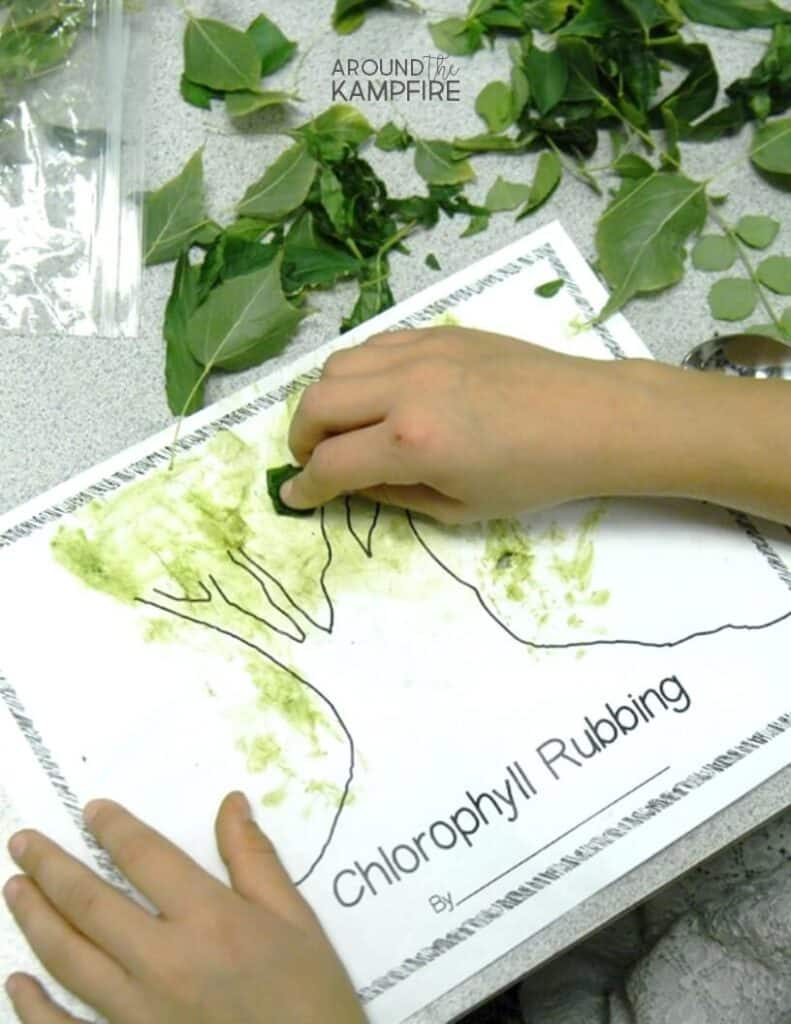
Incorporating Art into Science
As teachers, we may view art as the opposite of science. Science is driven by data, while art is an expression of creativity. But they have more in common than you think. Both artists and scientists closely observe the world around them. They question, explore, and discover. Bringing these two worlds together in your classroom can lead to a deeper understanding of science topics and help students develop creative problem solving skills.
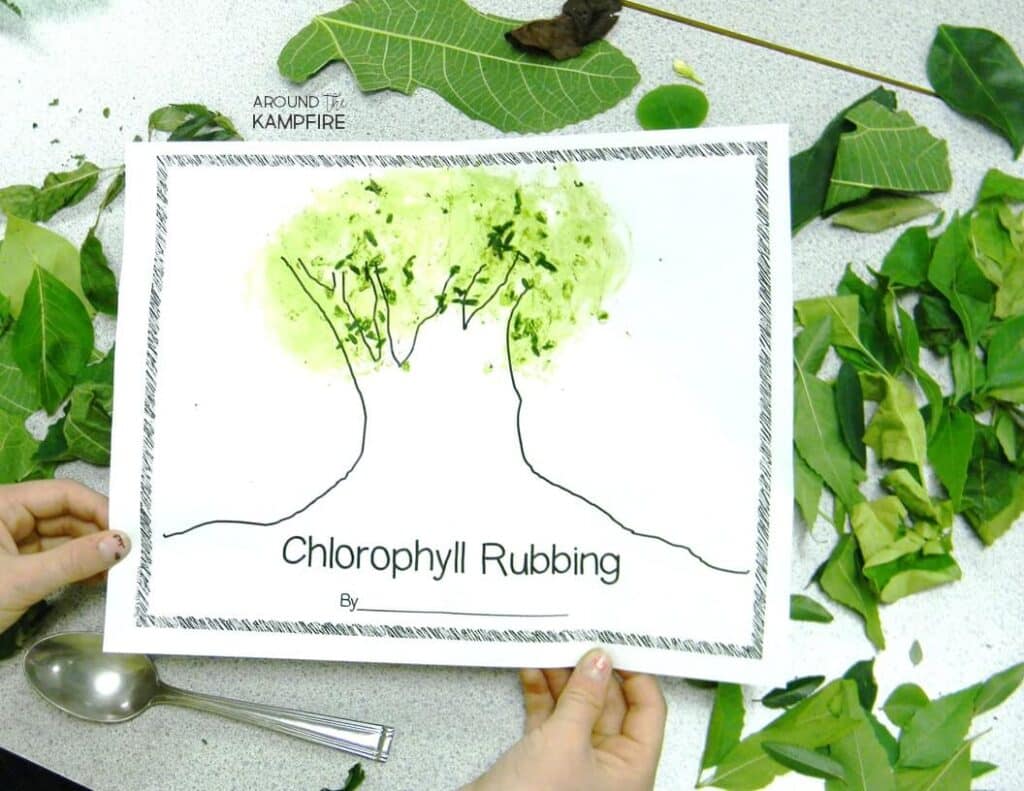
Through creative art projects like these chlorophyll paintings, we can often excite our hardest to engage learners and create a unique experience for students who struggle to retain information. I’m a big fan of incorporating art into all areas in my classroom and hope this post gives you ideas for how you can too.
Click here for a complete plant life cycle unit with lesson plans, labs & teaching Power Point
Be sure to pin it for later so you’ll have it when you plan!
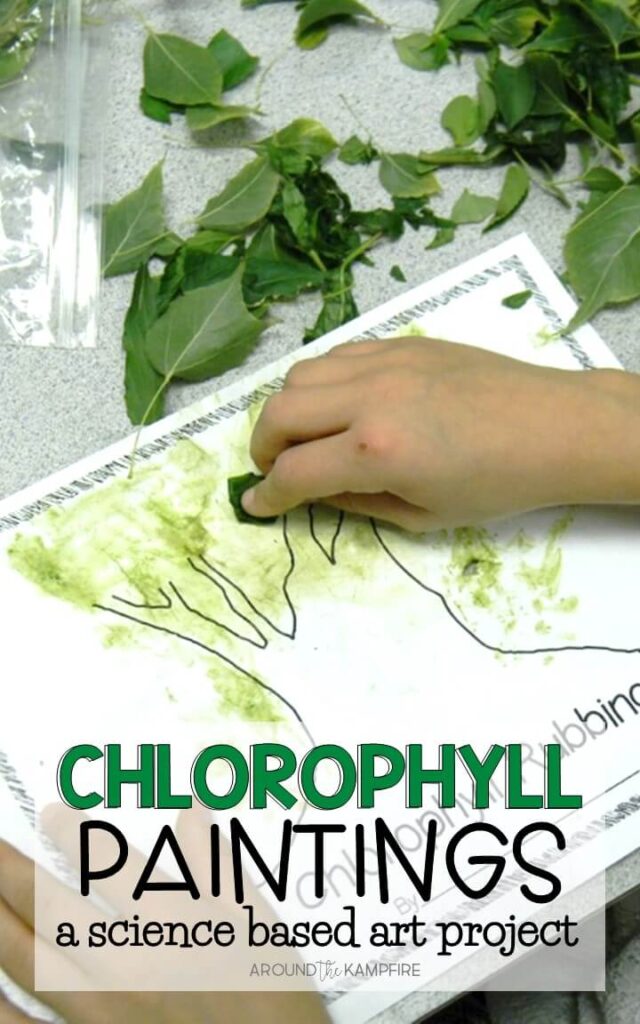
Would you like a FREE set of plant science posters?
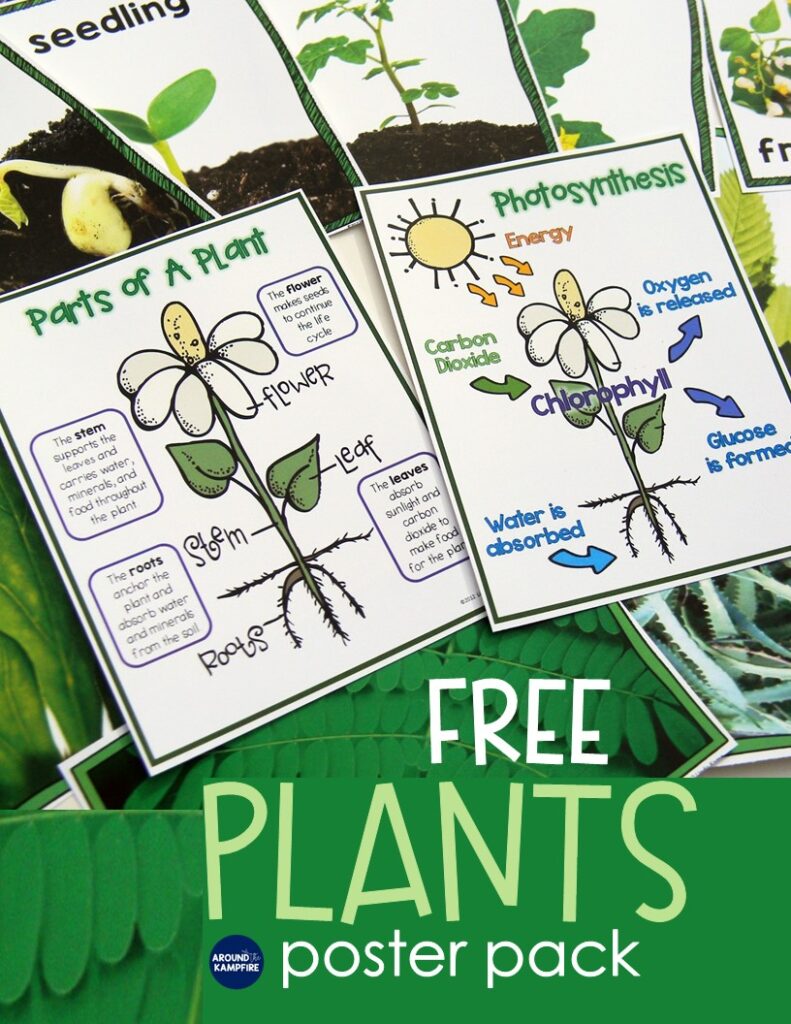
Drop your personal email in below and I’ll send them to you! (Your personal email is best. Schools often block outside emails with attachments.)
You might also like these science activities! Click the pictures to read these posts.
For more art ideas to use in your classroom check out my Pinterest boards, Art for Kids and Educational Crafts for Kids.
Happy teaching!
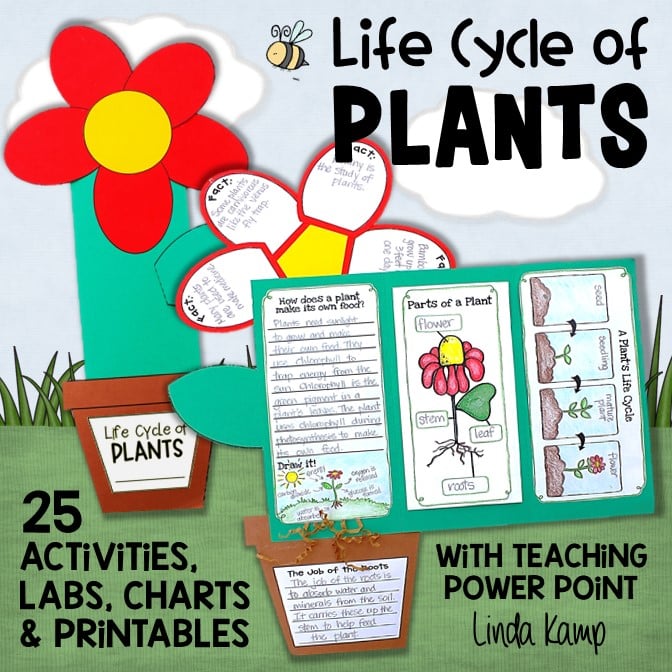
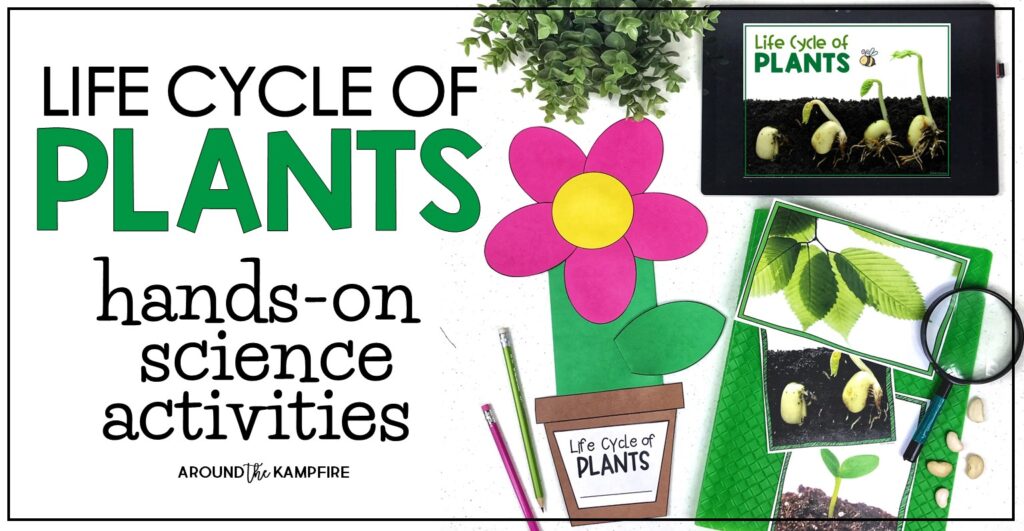
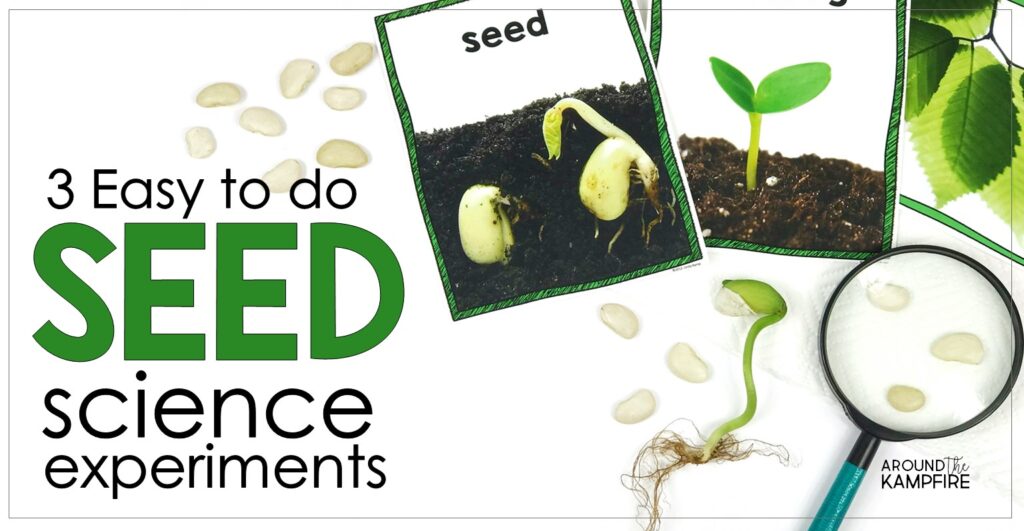
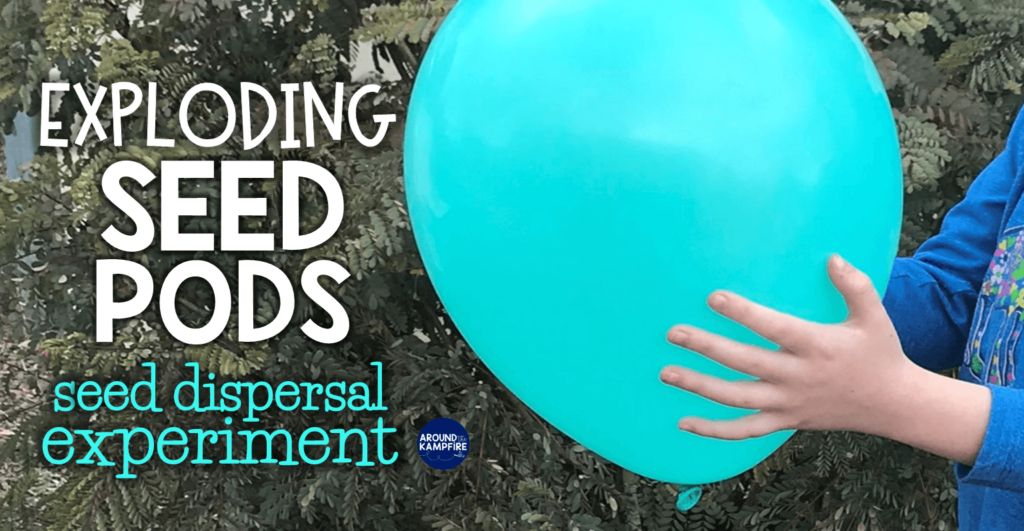


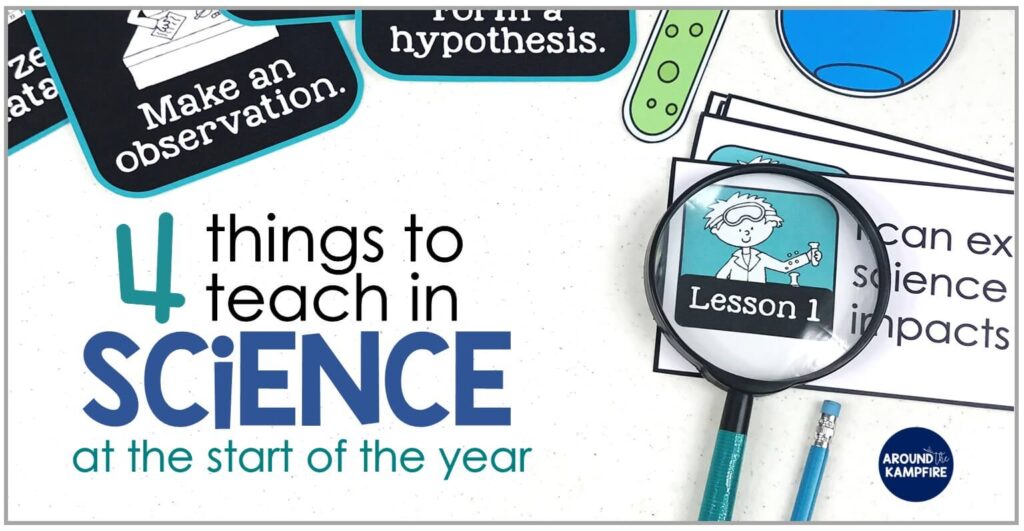
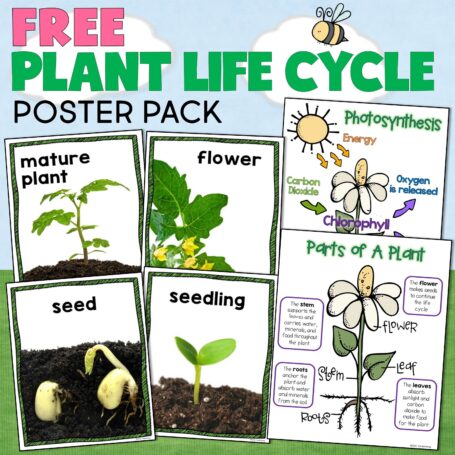
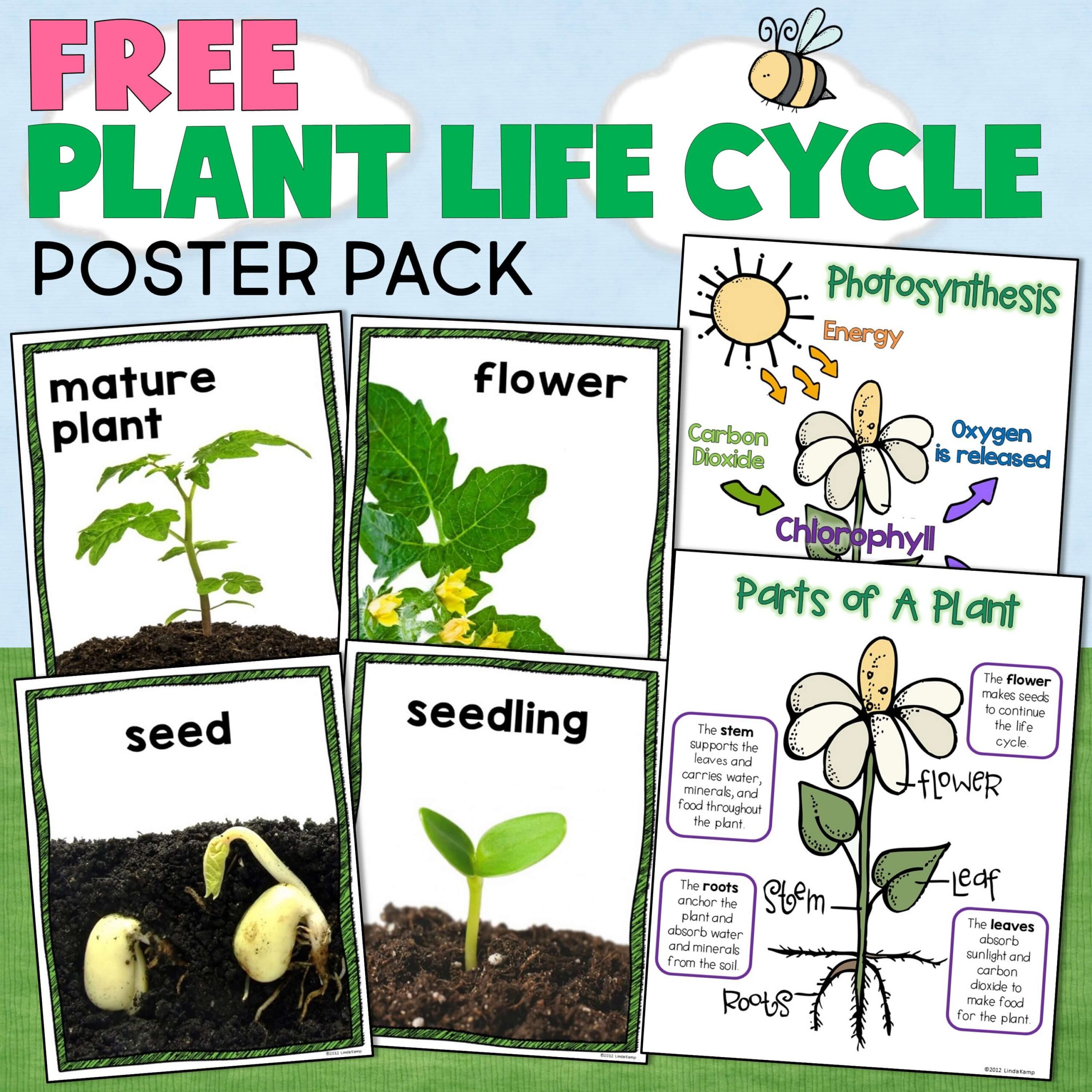




This is an awesome site!! Great ideas!!
Amazing info I got from your blog, Good content about chlorophyll paintings! I am just reaching out to say keep up the good work.
https://www.ppropainting.com.au/
Thank you for such a wonderful project. Can’t wait for warm weather, and leaves! This is something I can do with my grandchildren.
I don’t have any comments.
What standard does this fulfill? Thank you!
Hi Sydney,
I don’t believe there is an exact standard that it aligns to, however, I use it as an art extension during our plant unit after students learn about plant needs(sunlight)and the process of photosynthesis.
Do you have questions the kids can use in groups to talk about the different leaves/functions/chlorophyll. Thank you
Unfortunately I don’t Marian, but I do have a lab for investigating how the shape of a leaf helps the plant get the proper amount of sunlight it needs. You can find the post HERE.
I’m going to do this art project with my class and wanted to ask how long the “paint” lasts. We want to display the art work in February and don’t know if making them in December is too early.
Unable to leave email and name for plant posters, kept getting the following message:
Reference Error: Promise is undefined.